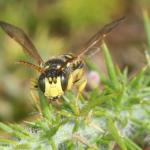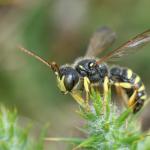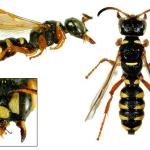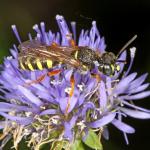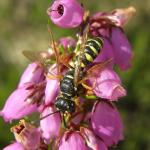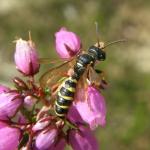In Britain, the range extends from east Kent to west Cornwall, and in the east, northwards to Lincolnshire (where it is rare). It is also present on the larger Channel Islands.
Not listed in Shirt (1987) or Falk (1991). The restricted distribution and its precise habitat requirements suggest that it may be under threat.
This wasp is sometimes locally common on sandy heathland in southern England (there are numerous records from coastal heaths in Cornwall). Other biotopes, such as coastal cliffs, are occasionally utilised.
The species is active from mid-June to late September.
As in C. arenaria, C. ruficornis also preys mainly on adult curculionids, with occasional beetles of other families such as Chrysomelidae (Hamm & Richards, 1930; Lomholdt, 1976). The unusual shape of the female clypeus (a projecting, down-curved flange) is likely to be associated with the method of carrying the prey.
On heaths, specimens are generally encountered singly as they fly low over the vegetation. Very little appears to be known of the biology of this species, as nests are rarely found. Although it is likely to be broadly similar to C. arenaria, it seems not to nest gregariously in the manner of that species or C. rybyensis.
1997
Proofed: March 2012


